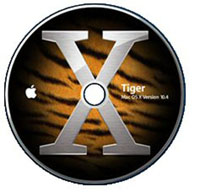 The Kensington Pocket Mouse fits in between the other two mice: in size, features, and price. The mouse itself features a sharp black and metallic silver design. It reminds me of the interior of an Audi TT. The mouse is symmetrical allowing for left handed use. The mouse glides with minimum effort, and clicks satisfyingly. The scroll wheel is rubberized and works well. Included in the package is the mouse, the transceiver, a manual, and 2 Duracell AAA batteries, but no carrying case. The manual states that there is software to be downloaded off the company website, however the mouse worked just fine natively in Windows XP Home without any additional software.
The Kensington Pocket Mouse fits in between the other two mice: in size, features, and price. The mouse itself features a sharp black and metallic silver design. It reminds me of the interior of an Audi TT. The mouse is symmetrical allowing for left handed use. The mouse glides with minimum effort, and clicks satisfyingly. The scroll wheel is rubberized and works well. Included in the package is the mouse, the transceiver, a manual, and 2 Duracell AAA batteries, but no carrying case. The manual states that there is software to be downloaded off the company website, however the mouse worked just fine natively in Windows XP Home without any additional software.
 The wide body allows the transceiver to be housed in the body of the mouse. With this slick design, pressing a button on top of the mouse pops out the transceiver, which can only go in right side up. The transceiver is small enough that even with closely spaced USB ports, it does not block the other ports. The space in the mouse gets covered by a pop up door to cover the opening which keeps dust out and maintains the sharp lines.
The wide body allows the transceiver to be housed in the body of the mouse. With this slick design, pressing a button on top of the mouse pops out the transceiver, which can only go in right side up. The transceiver is small enough that even with closely spaced USB ports, it does not block the other ports. The space in the mouse gets covered by a pop up door to cover the opening which keeps dust out and maintains the sharp lines.
 Power is supplied by 2 AAA batteries. The battery compartment is accessed by pressing the black top in the center. There is no published battery life estimate. They lasted over 10 days of testing with no problems. The battery power indicator is the translucent scroll wheel, allowing the red LED to shine through. This is a very neat feature, which looks especially dramatic at night. Popping out the transceiver turns the mouse on and replacing the transceiver turns it off.
Power is supplied by 2 AAA batteries. The battery compartment is accessed by pressing the black top in the center. There is no published battery life estimate. They lasted over 10 days of testing with no problems. The battery power indicator is the translucent scroll wheel, allowing the red LED to shine through. This is a very neat feature, which looks especially dramatic at night. Popping out the transceiver turns the mouse on and replacing the transceiver turns it off.
 The Kensington Pocket Mouse uses a Quick RF technology (30% faster according to the package). I’m honestly not sure what this is supposed to mean, but it does work very effectively. It has a working range that matches the Logitech product, with a generous 12+ feet measured. I believe it uses the 27 MHz frequency. There was no interference with cordless phones or my WiFi network during testing.
The Kensington Pocket Mouse uses a Quick RF technology (30% faster according to the package). I’m honestly not sure what this is supposed to mean, but it does work very effectively. It has a working range that matches the Logitech product, with a generous 12+ feet measured. I believe it uses the 27 MHz frequency. There was no interference with cordless phones or my WiFi network during testing.
 The optical engine uses Diamond Eye technology. This is an 800 dpi sensor. It tracked accurately on every surface tested, except the very difficult glass window that fools most mice. It never hesitated or lost communication on a variety of surfaces including carpeting, formica, and my pants leg!
The optical engine uses Diamond Eye technology. This is an 800 dpi sensor. It tracked accurately on every surface tested, except the very difficult glass window that fools most mice. It never hesitated or lost communication on a variety of surfaces including carpeting, formica, and my pants leg!
Overall, this was a strong entry. The Kensington Pocket Mouse also is LD Approved. While it retails for $49, the street price is less. One downside is that for users who like to keep their notebooks permanently set up with the transceiver in the USB port, there is no way to turn the mouse off without removing the battery cover. This may not be a big issue though, as the mouse goes into a sleep mode after five minutes to conserve battery power.











 Ok, we haven’t done anything… but Apple has! That’s right kids, Apple has set a date for it’s newest OS to be released.
Ok, we haven’t done anything… but Apple has! That’s right kids, Apple has set a date for it’s newest OS to be released. 


-t.jpg)





